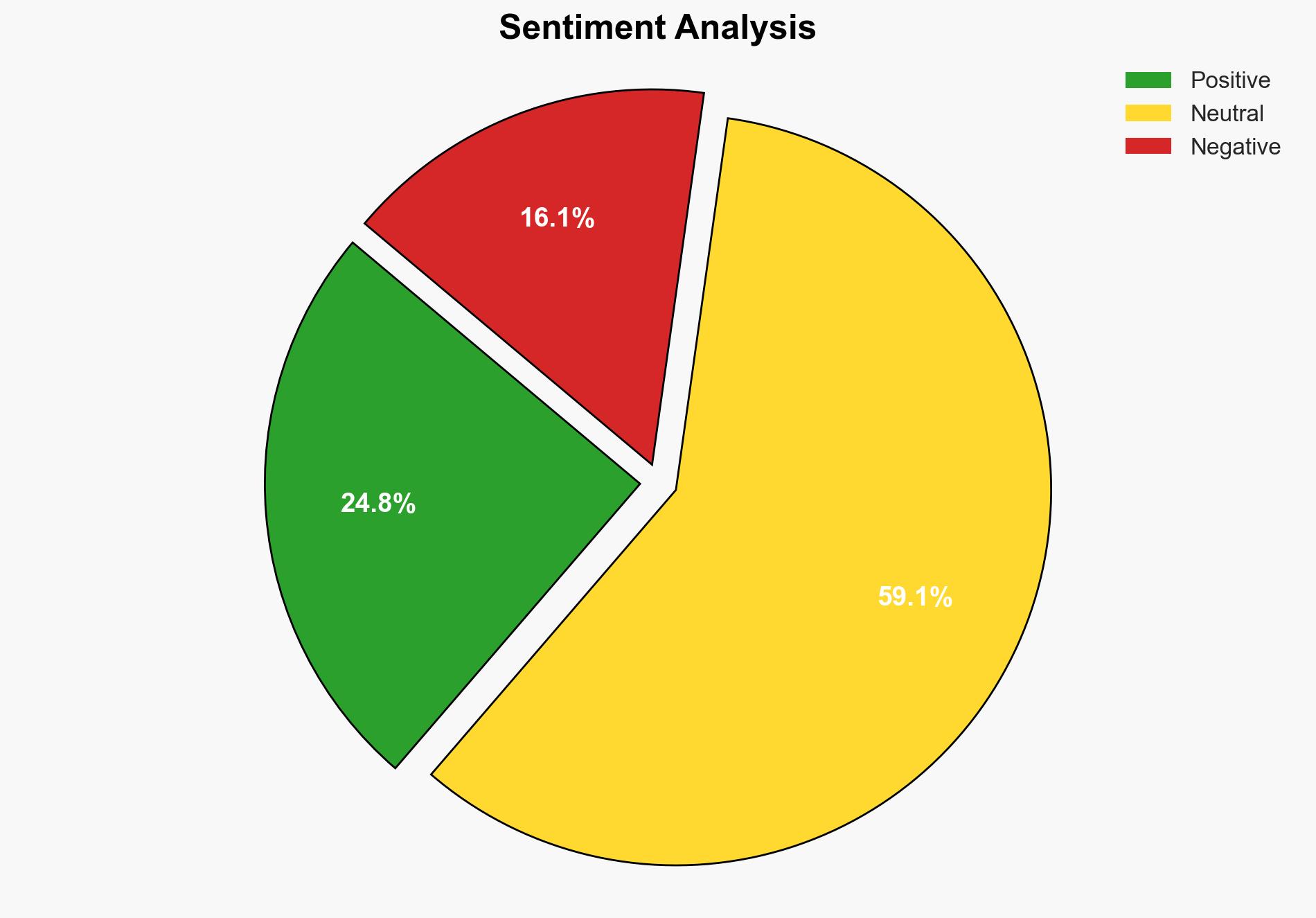On to Greenland – The American Conservative
Published on: 2025-03-05
Intelligence Report: On to Greenland – The American Conservative
1. BLUF (Bottom Line Up Front)
The analysis highlights the strategic importance of Greenland in the context of American foreign policy, particularly in relation to Arctic security and economic opportunities. The discourse suggests a potential shift in U.S. policy towards greater engagement with Greenland, emphasizing peaceful integration and cooperation. Key recommendations include leveraging diplomatic channels to foster mutually beneficial agreements and ensuring strategic investments in Greenland’s infrastructure to counterbalance foreign influence.
2. Detailed Analysis
The following structured analytic techniques have been applied for this analysis:
SWOT Analysis
Strengths: Greenland’s strategic location in the Arctic, potential for resource extraction, and geopolitical significance.
Weaknesses: Limited infrastructure and economic development, dependence on foreign investment.
Opportunities: Increased cooperation with the U.S., potential for economic growth through mining and trade.
Threats: Foreign influence from competing powers, environmental challenges, and political instability.
Cross-Impact Matrix
Events in Greenland, such as increased U.S. engagement, may influence Arctic security dynamics, affecting neighboring regions like Canada and Russia. Enhanced cooperation could lead to shifts in regional alliances and economic partnerships.
Scenario Generation
Potential scenarios include:
- Best-case: Successful integration of Greenland into the U.S. sphere of influence, leading to economic growth and enhanced security cooperation.
- Worst-case: Increased tensions with other Arctic nations, leading to geopolitical conflicts and economic instability.
- Most likely: Gradual increase in U.S. influence through diplomatic and economic engagement, with moderate improvements in Greenland’s infrastructure and economy.
3. Implications and Strategic Risks
The strategic risks include potential escalation of geopolitical tensions in the Arctic, challenges in balancing environmental concerns with economic development, and the risk of foreign influence undermining U.S. interests. The trend towards increased U.S. engagement in Greenland may lead to shifts in regional power dynamics, impacting national security and economic interests.
4. Recommendations and Outlook
Recommendations:
- Enhance diplomatic efforts to secure agreements with Greenland and Denmark, focusing on peaceful integration and cooperation.
- Invest in Greenland’s infrastructure and economic development to strengthen ties and counter foreign influence.
- Monitor geopolitical developments in the Arctic to anticipate and mitigate potential conflicts.
Outlook:
The most likely outcome is a gradual increase in U.S. influence in Greenland, resulting in strengthened economic and security ties. However, the potential for geopolitical tensions remains, necessitating careful management of international relations and strategic investments.
5. Key Individuals and Entities
The report mentions significant individuals such as Donald Trump and Naaja Nathanielsen, as well as entities like the United States and Greenland. These individuals and entities play crucial roles in shaping the geopolitical landscape and influencing the outcomes of U.S. foreign policy in the region.





